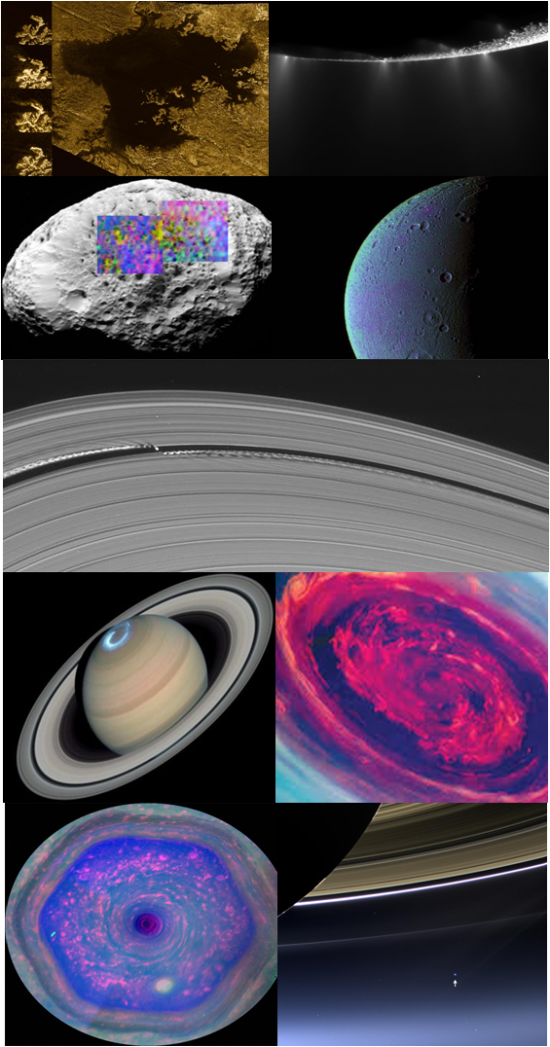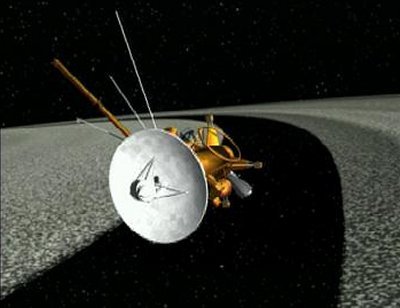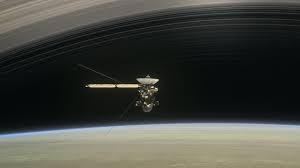September 15, 2017 – I imagine for the scientists wed to NASA’s Cassini mission, saying goodbye to the robot spacecraft had to be hard. The images and data delivered represent significant new knowledge about our Solar System neighbour. We not only studied the planet and its rings, we discovered new moons, and in visiting the ones we already knew, were blown away by what was found. Whether it be Titan or Enceladus, we have given ourselves new reasons to want to go back to Saturn.
In so many science fiction novels, for some reason, Saturn is always portrayed as the intermediate station from which humanity moves out into deeper space to find habitable planets circling remote stars. But what we never realized was that around Saturn there could be life. Titan, with its liquid methane rain, rivers and lakes gave us evidence of amino acids present in its atmosphere. The geysers of Enceladus contained water, salts, ammonia, and molecules we associate with the presence of primitive life.
Before Cassini we had no idea that the Saturnian system could produce things so familiar. Titan’s atmosphere contained mostly nitrogen just like Earth’s atmosphere. Its rivers and lakes and rain may not have been water, but the landscapes seen from Cassini’s images and the Huygens lander seemed so familiar. On Titan water formed much of the land mass. The rivers of Titan flowed through them carving out channels like here on Earth. It is likely that the lakes and seas these rivers flow into contain the building blocks of life as we know it, or life as we don’t know it based on different chemistry. Cassini has whet our appetite to go back and sail on those methane seas and roam through its desert dunes and icy cliffs.
Cassini found three new moons to add to the 59 known ones. It discovered hydrocarbons on Hyperion, a moon that looks like a sponge or lava rock suspended in space. On Dione, a small moon, Cassini detected the presence of oxygen in its atmosphere. How did oxygen form in a dead world?
The mystery of the rings and why they are so much larger than any other planet in the Solar System remains unknown. But we understand the ring system much better having detected shepherd moons that keep the rings in place, and grooves that make the rings look like a vinyl long-playing record. We also found new rings previously undetected and a moon being formed between two rings as it accumulated ring particles.
Cassini showed us auroras and giant hurricanes on the planet itself. We found a hexagon-like atmospheric pattern at Saturn’s north pole. We followed Saturn through half of its year watching seasonal changes in its almost 30-year circuit around the Sun.
And then in one priceless shot Cassini showed us Earth through a gap in the rings, a pale blue orb, seen against the backdrop of space. When we blew the image up we could even faintly make out Earth’s companion moon.
We will miss Cassini. It was quite a ride.












